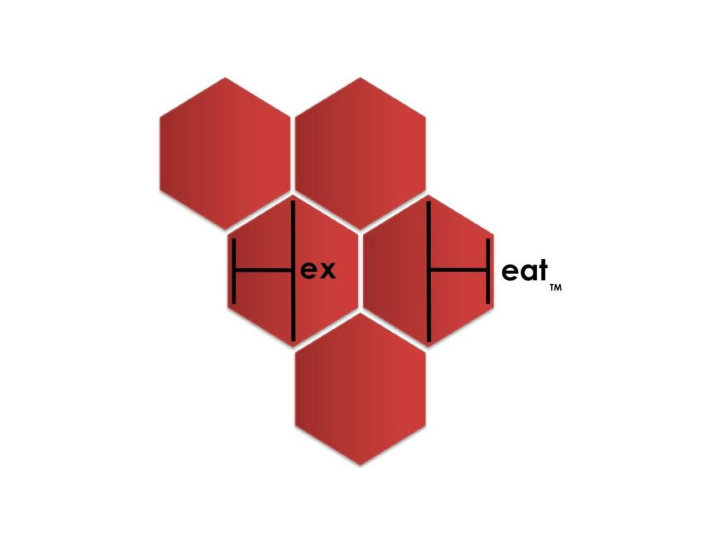



Team Kevin Thompson • EE – Responsible for circuit design Sam Foster • EE – Responsible for code which manages power distribution on the heated surface Craig Cogdill • CompE – Responsible for graphical user interface Stanley Nestler • MechE – Responsible for manufacture and analysis of physical prototype HexHeat Senior Design End of Semester Presentation Colorado State University December 11, 2013
Outline 1. Team & Project Introduction 2. Final Goals 3. Prior Research 4. Current Work 5. Budget 6. Plans for Next Semester 7. Questions HexHeat Senior Design End of Semester Presentation Colorado State University December 11, 2013
Customer Needs Current stovetops fall short in at least one of five major areas: 1) Number of heating elements 2) Size of the heating elements 3) Shape of the heating elements 4) Cookware material 5) Safety HexHeat Senior Design End of Semester Presentation Colorado State University December 11, 2013
Final Goals Cook for people at Engineering Days – Create a surface which can heat any material of any size or shape, anywhere on the surface – Fully functional prototype • Can boil water in any size cookware placed on the surface • 100% duty cycle on all active elements • Intuitive and user-friendly graphical user interface HexHeat Senior Design End of Semester Presentation Colorado State University December 11, 2013
Prior Research Independent Study in Spring 2013 – LED prototype – Heated prototype – Android based graphical user interface HexHeat Senior Design End of Semester Presentation Colorado State University December 11, 2013
Physical Design Original Design: • Sheathed tubular heating elements – Benefit: Safety, reliability, simple electrical connections – Cost: $32 per element Sheathed Tubular Heating Element HexHeat Senior Design End of Semester Presentation Colorado State University December 11, 2013
Physical Design Solution: • Uninsulated nichrome wire – Benefit: <$1 per element – Cost: Flexible and prone to short circuits HexHeat Senior Design End of Semester Presentation Colorado State University December 11, 2013
Physical Design Solution continued: • Refractory brick – Benefit: Maintain safe stovetop operation – Cost: Difficult to manufacture Final Design – Isometric Model HexHeat Senior Design End of Semester Presentation Colorado State University December 11, 2013
Circuit Design Design Evolution: • First design – Temperature controlled by gate voltage • Second design – Temperature controlled by number of active current sources • Present design – Temperature controlled by amount of time full power is applied to an element HexHeat Senior Design End of Semester Presentation Colorado State University December 11, 2013
Circuit Design Present Circuit Design HexHeat Senior Design End of Semester Presentation Colorado State University December 11, 2013
Power Management Code Progress this Semester: – Duty cycle – Optimized algorithms – Thorough code testing Flow Diagram for Power Management Code HexHeat Senior Design End of Semester Presentation Colorado State University December 11, 2013
GUI HexHeat Senior Design End of Semester Presentation Colorado State University December 11, 2013
Bill of Materials HexHeat Senior Design End of Semester Presentation Colorado State University December 11, 2013
Plans for Next Semester • Begin small scale testing of new circuit design • Define packet structure for GUI-microcontroller communication • Manufacture physical design • Test code thoroughly HexHeat Senior Design End of Semester Presentation Colorado State University December 11, 2013
Conclusion • This semester has been productive! • We ran into challenges and we found engineering solutions • We are closer to our final goal HexHeat Senior Design End of Semester Presentation Colorado State University December 11, 2013
Questions? Thank you for your time! For more information, please visit HexHeat.com. To contact us, please fill out the form under the Contact tab at HexHeat.com. HexHeat Senior Design End of Semester Presentation Colorado State University December 11, 2013
Recommend
More recommend